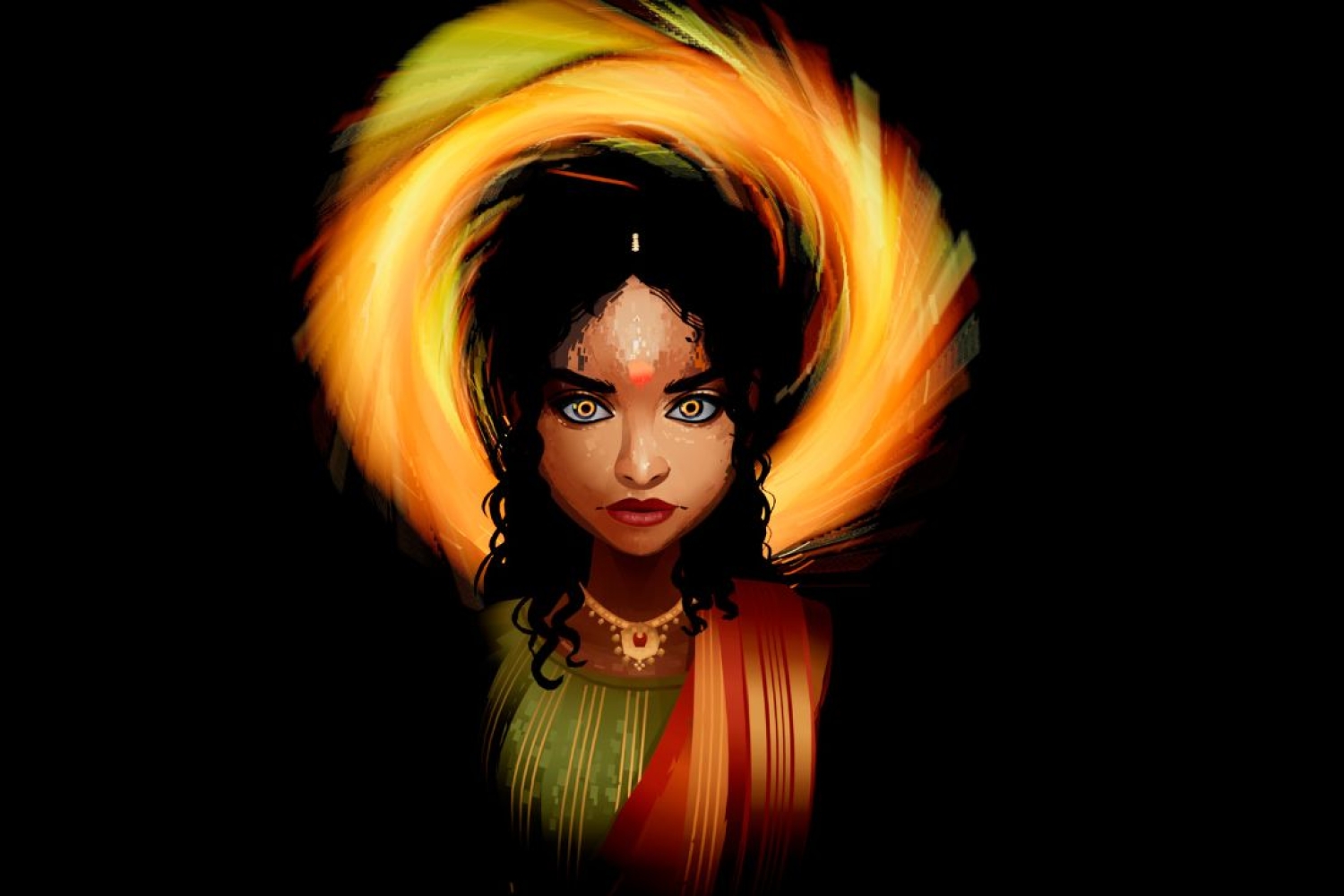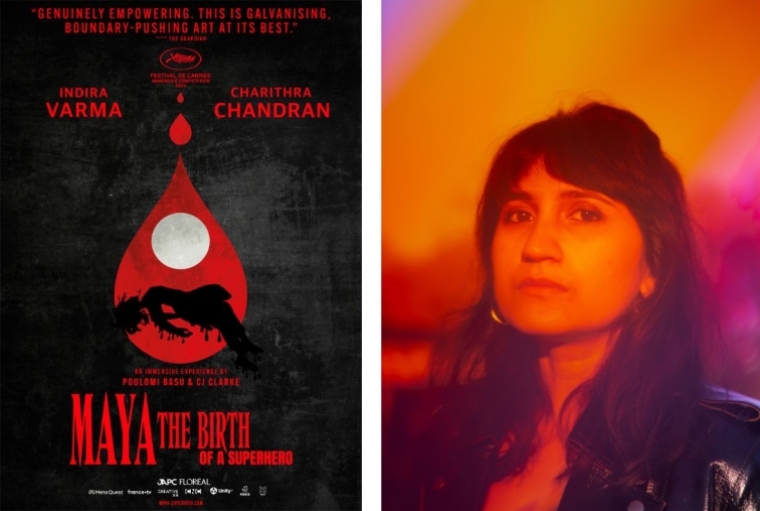

Poulomi Basu’s work derives its power from the fusion of art, activism, and filmmaking. Pouring her heart into immersive storytelling, she co-directed Maya: The Birth of a Superhero with CJ Clarke. This groundbreaking film has been selected for the 2024 Cannes Film Festival under the new category of immersive film. Maya chronicles the journey of a young South Asian girl in London whose world is upended when her menstrual cycle begins. Confronting the shame and fear imposed by society, she discovers her superhero abilities within this natural biological process. Scheduled for a worldwide release on May 30, 2024 in the Meta store for free of charge, Maya offers present new worlds of possibilities for women to find magic within themselves.
In a candid conversation, we delve into the fascinating journey of the multifaceted artist, filmmaker, and activist.

A Fluid Practice
My work exists within the nexus of art, film, VR and activism. I don’t see myself as an interdisciplinary artist. For me, my practice is quite fluid. My roots were in photography and I grew up in Kolkata. I come from a really simple family. My parents didn't even finish their education. I didn't come from like a lot of money and surviving as an artist was difficult. Money buys you the freedom to just focus on your craft. But I had an early understanding of art and politics because of my upbringing in Kolkata. I watched a lot of cinema growing up and I was very much inspired by the French New Wave cinema. I loved Éric Rohmer, Godard and Truffaut. Then, my interests spilled into watching Satyajit] Ray because it is just instilled into my DNA. Ritwik Ghatak too.

The Superhero that Derives Power from Menstruation
Maya is a part of a big umbrella project called Blood Speaks, which is about creating awareness of normalized violence against women. Imposing control on a woman's body starts the minute her menstruation begins. In Nepal and in parts of India, women actually dislocate themselves in confinement when they are on their periods.
It began as a sort of motive to understand why do people fear menstruating women? The answer was that you're transitioning from becoming a girl to a woman, which is seen as a threatening thing in our society and in most societies because it maps the beginning of your sexual awakening. I used menstruation as way of harnessing your own inner strength, overcoming your fear and conquering your shame. The work uses virtual reality to take the audience through that journey from shame to empowerment.
My idea is to make people understand an embodied sense of experience, where you feel like you're ready to come out of the shame and activate those ideas to enable girls to get better lives. Periods is not something small. It relates to every bigger thing in the world, going forward to abortions, miscarriages, pregnancy, to even menopause. In India alone, some 24 million girls drop out of school the minute their period starts because they don't have access to toilets and sanitary napkins. I wanted to tell the story of an Indian immigrant girl, growing up in London, and show the hidden forms of patriarchy and misogyny that exists in the West—while also decolonizing the superhero genre. It is a satire and almost like a psychological thriller.
Challenges on the Way
The biggest challenge for me in this work has been to get any kind of funding around it. It took me eleven years to get people to understand a story about periods. The only people who want to fund works like this are other feminists, which puts us in a very narrow world, where very few people want to help us and make works like this.
The whole piece is hand-drawn without using computer graphics. When you’re inside the piece, you feel like you are moving through a painting so it’s been a massively challenging piece to make but let’s just say we got there in the end.
Words Paridhi Badgotri
Date 23.05.2024